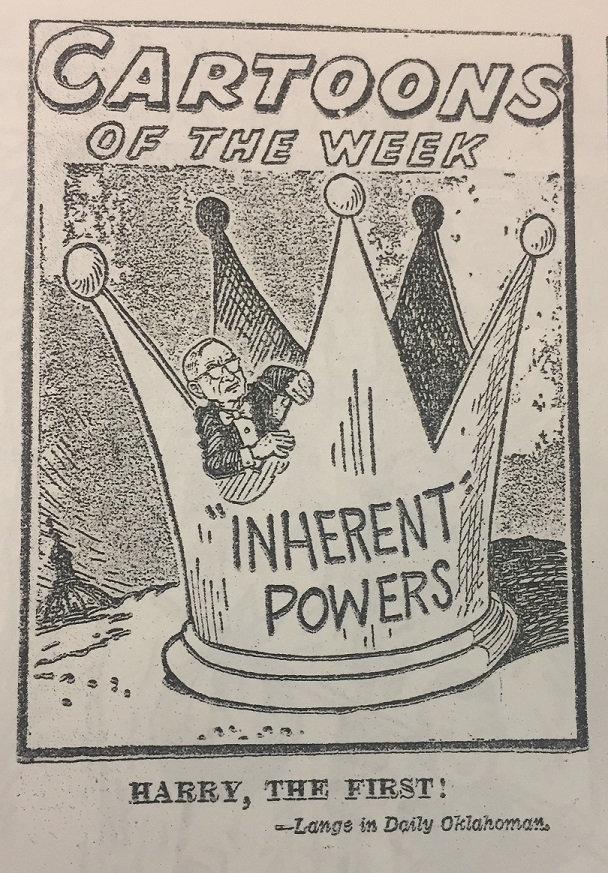By ANITA SNOW

A sign stands for the Resolution Copper Mining land-swap project on July 22, 2015, in Superior, Ariz. Native American tribal members fighting plans for an enormous copper mine on land they consider sacred say they are increasingly worried U.S. officials will move forward on the project even as they await a federal appellate court ruling in the case.
PHOENIX (AP) — Native American tribal members fighting plans for an enormous copper mine on land they consider sacred say they are increasingly worried U.S. officials will publish an environmental review paving the way for the project even as they await a federal appeals court ruling in the case.
A U.S. government attorney said during last month’s hearing of a full panel of the 9th Circuit Court of Appeals that the final environmental impact study for construction of the mine at Oak Flat, Arizona, could be published this spring.
San Carlos Apache Tribe Chairman Terry Rambler said during a visit last week that U.S. Forest Service officials confirmed plans to push forward on publication of the environmental analysis. That step would kick off a 60-day period culminating in a land swap allowing the project to go forward.
“Obliterating Oak Flat for a copper mine will be a grave human rights violation against Indigenous people and an environmental catastrophe,” Rambler said in a written statement this week. “The Biden Administration’s commitment to Indian Country will be seriously eroded if it approves this mine.”
Apache Stronghold, a group composed of San Carlos Apache members and others, wants to halt the land swap while the case plays out in court. The panel of 11 judges on the appeals court is expected to issue a decision in the next few months.
Apache Stronghold sued the U.S. government under the Religious Freedom Restoration Act to protect the land known as Chi’chil Bildagoteel, an area of ancient oaks and traditional plants the San Carlos Apaches consider important for their ceremonies at Oak Flat in the Tonto National Forest about 70 miles (110 kilometers) east of Phoenix.
The Forest Service is now revising the environmental analysis, “which is expected to be completed in the coming months,” national press officer Wade Muehlhof said Friday in a written response to emailed queries about the agency’s plans.
He wrote that the Forest Service has “committed to providing at least 60 days’ notice before any future environmental analysis and Draft Record Of Decision (DROD) for the Land Exchange and Project is issued.”
Muehlhof also said consultation with tribal members is ongoing, including a planned April 25 meeting.
Representatives of the Resolution Copper mining company said they were unaware of the meeting or any plans by the agency.
U.S. Rep. Raúl M. Grijalva, a Democrat who represents southern Arizona, has introduced legislation aimed at halting the project. He urged Agriculture Secretary Tom Vilsack this week to continue withholding publication of the environmental review.
“If allowed to proceed, Resolution Copper would desecrate Oak Flat’s tribal cultural and religious heritage sites, deplete already scarce water resources in Arizona, adversely impact imperiled species, and create a crater up to 1,115 feet deep and roughly 1.8 miles across,” Grijalva wrote. “The destruction this mine would cause far outweighs its benefits.”
The swap was a provision included in a must-pass defense bill to give Resolution Copper3.75 square miles (9.71 square kilometers) of national forest land for eight other parcels the company owns elsewhere in Arizona.
Publication of the environmental analysis will start the clock on the 60-day period for the Forest Service to transfer Oak Flat to Resolution Copper.
An earlier environmental survey was pulled back while the U.S. Department of Agriculture, which oversees the Forest Service, consulted for months with Native American tribes and others about their concerns.
The mining company says it has been addressing concerns about the project. It notes there is broad local support for the mine, which could create thousands of jobs, add up to $1 billion annually to Arizona’s economy and potentially supply enough copper to meet up to one-quarter of U.S. demand.
Resolution Copper is a joint venture of global mining firms Rio Tinto, which has headquarters in Australia and the U.K., and BHP, which is based in Australia.
A smaller 9th Circuit panel previously ruled 2-1 that the federal government could give the Oak Flat land to Resolution Copper for the project. The court later agreed to let the larger panel hear the case.


- Apache Stronghold member Raetana Manny, 4, shows a sign to save Oak Flat, a site east of Phoenix that the group considers sacred, as she joined a gathering at Self Help Graphics & Art in the Los Angeles neighborhood of Boyle Heights on Monday, March 20, 2023. Native American tribal members fighting plans for an enormous copper mine on land they consider sacred say they are increasingly worried U.S. officials will move forward on the project even as they await a federal appellate court ruling in the case.




















